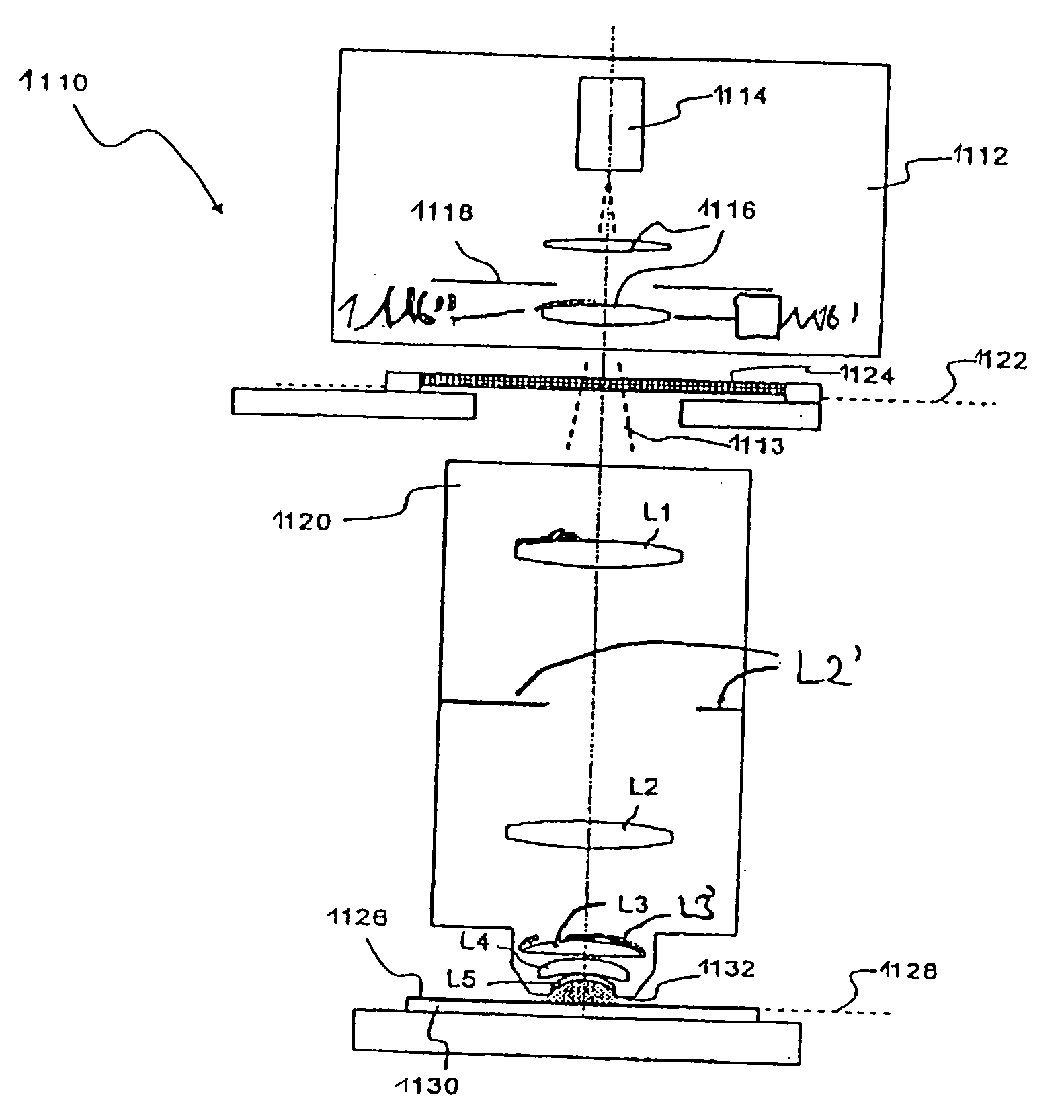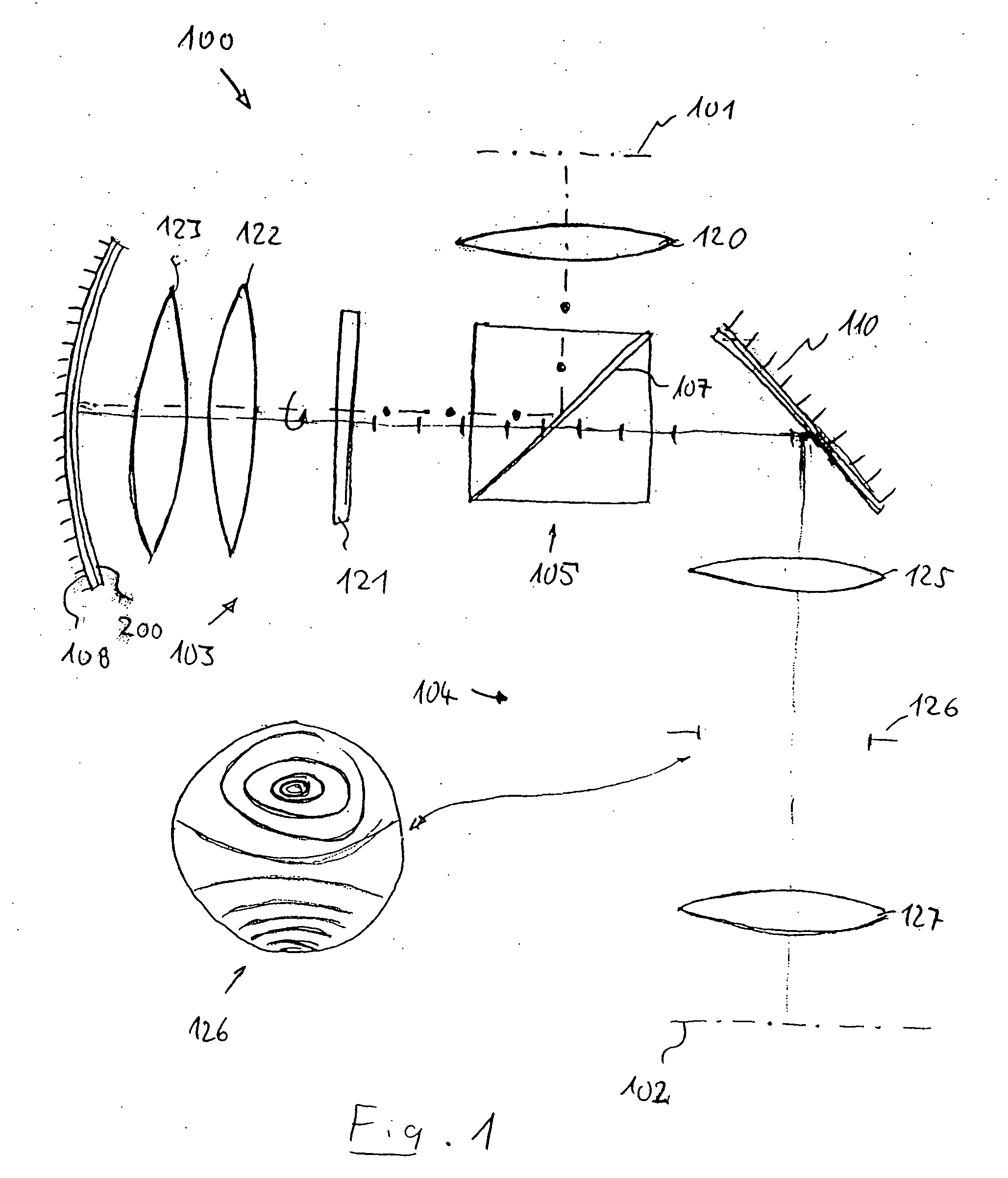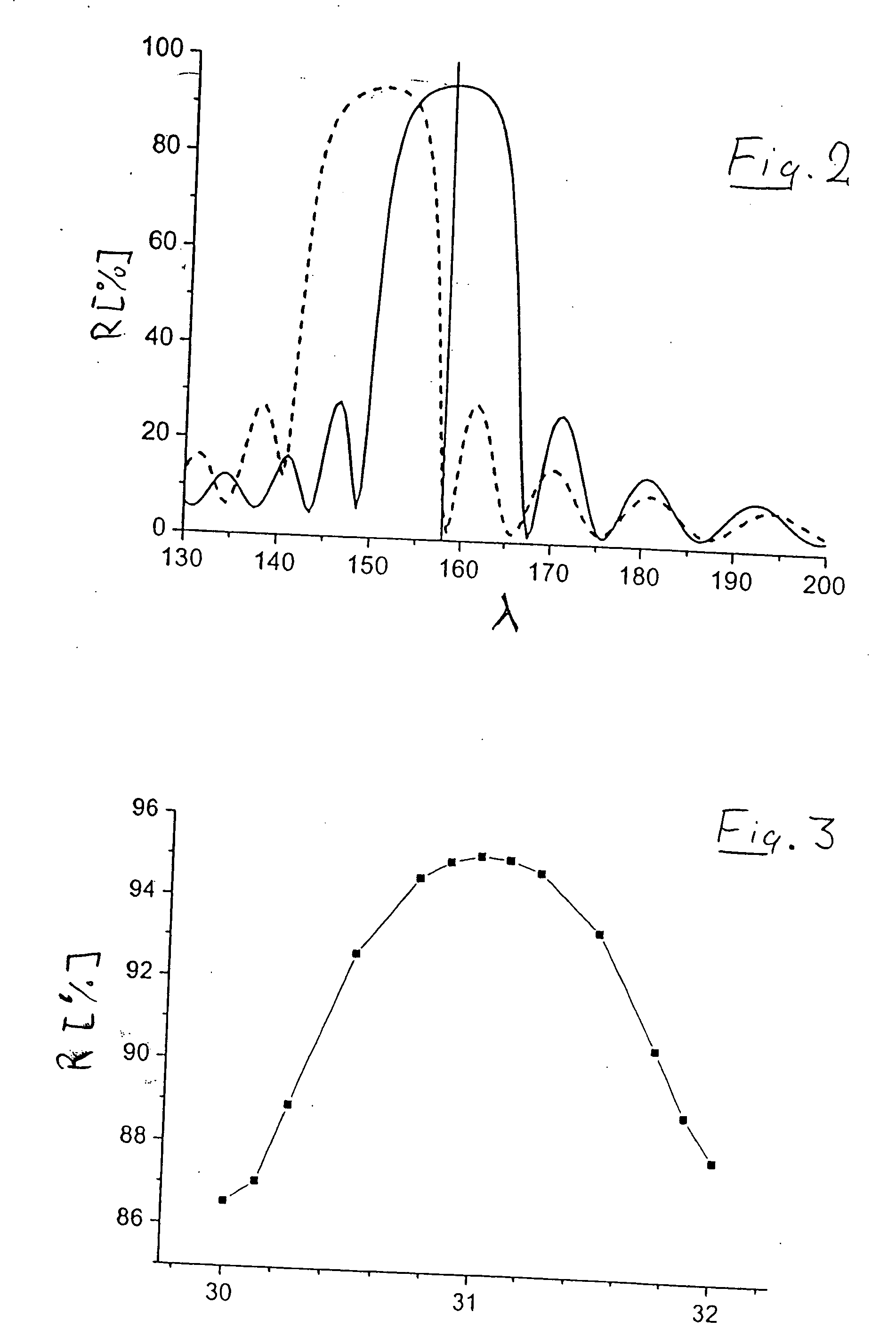Projection System with Compensation of Intensity Variations and Compensation Element Therefor
a projection system and intensity variation technology, applied in the field of projection systems with intensity variation compensation and compensation elements therefor, can solve the problems of non-uniform intensity distribution, problem area may occur, non-uniform intensity over field and pupil, etc., and achieve low refractive index, great modulation of layer thickness, and high refractive index
- Summary
- Abstract
- Description
- Claims
- Application Information
AI Technical Summary
Benefits of technology
Problems solved by technology
Method used
Image
Examples
Embodiment Construction
[0060] In order to elucidate a problem that can be solved by means of the invention, FIG. 1 schematically shows the construction of a catadioptric projection objective 100 with a polarization beam splitter. It serves for imaging a pattern of a reticle or the like arranged in its object plane 101 into its image plane 102 on a reduced scale, for example with the ratio 4:1, with exactly one real intermediate image (not shown) being generated. The projection objective, which is designed for an operating wavelength of λ=157 nm, has, between the object plane and the image plane, a first, catadioptric objective part 103 and behind that a second, purely dioptric objective part 104. The catadioptric objective part comprises a physical beam splitter 105 with a planar polarization beam splitter surface 107 oriented obliquely with respect to the optical axis, and also a mirror group with an imaging concave mirror 108. The objective part 104, which has a demagnifying effect, has a planar deflect...
PUM
 Login to View More
Login to View More Abstract
Description
Claims
Application Information
 Login to View More
Login to View More - R&D
- Intellectual Property
- Life Sciences
- Materials
- Tech Scout
- Unparalleled Data Quality
- Higher Quality Content
- 60% Fewer Hallucinations
Browse by: Latest US Patents, China's latest patents, Technical Efficacy Thesaurus, Application Domain, Technology Topic, Popular Technical Reports.
© 2025 PatSnap. All rights reserved.Legal|Privacy policy|Modern Slavery Act Transparency Statement|Sitemap|About US| Contact US: help@patsnap.com



